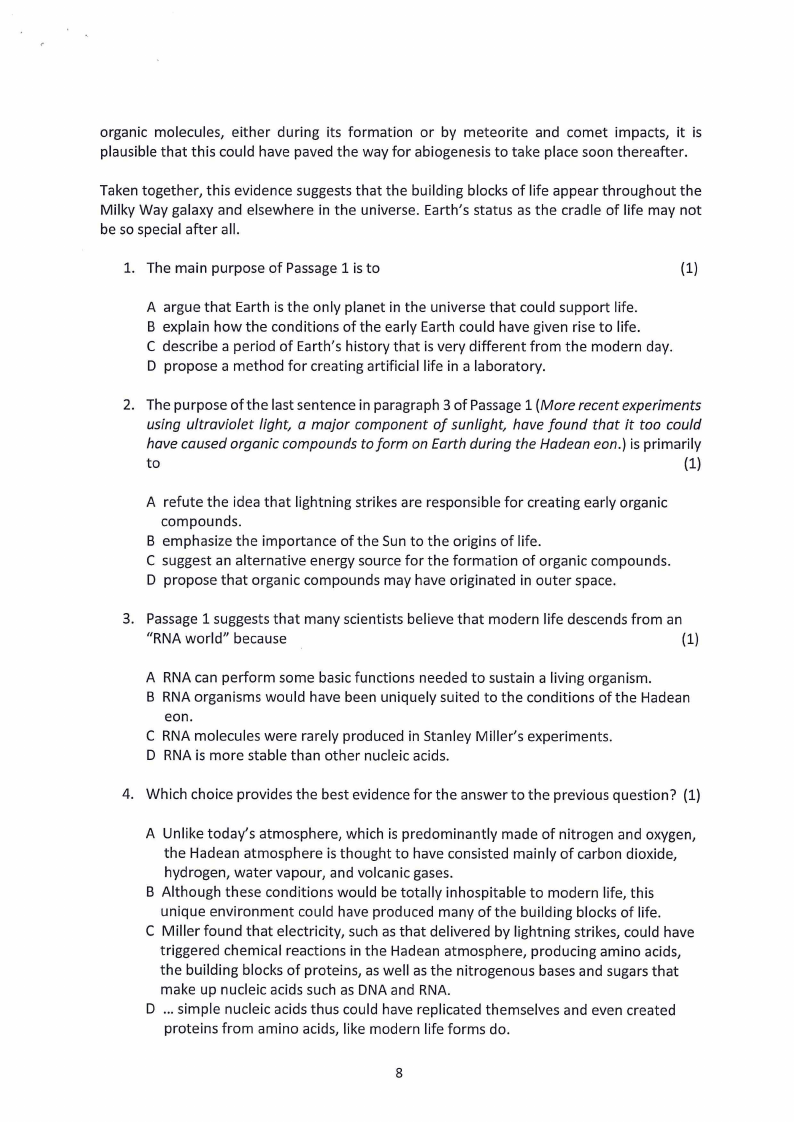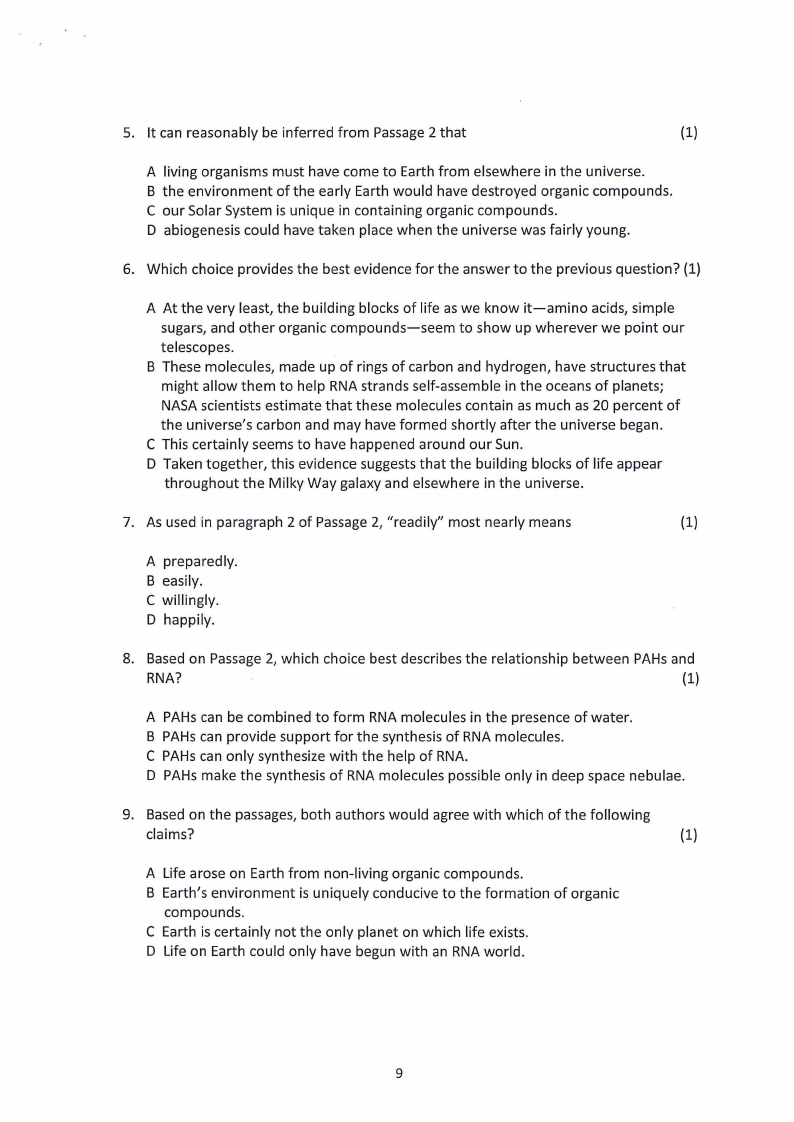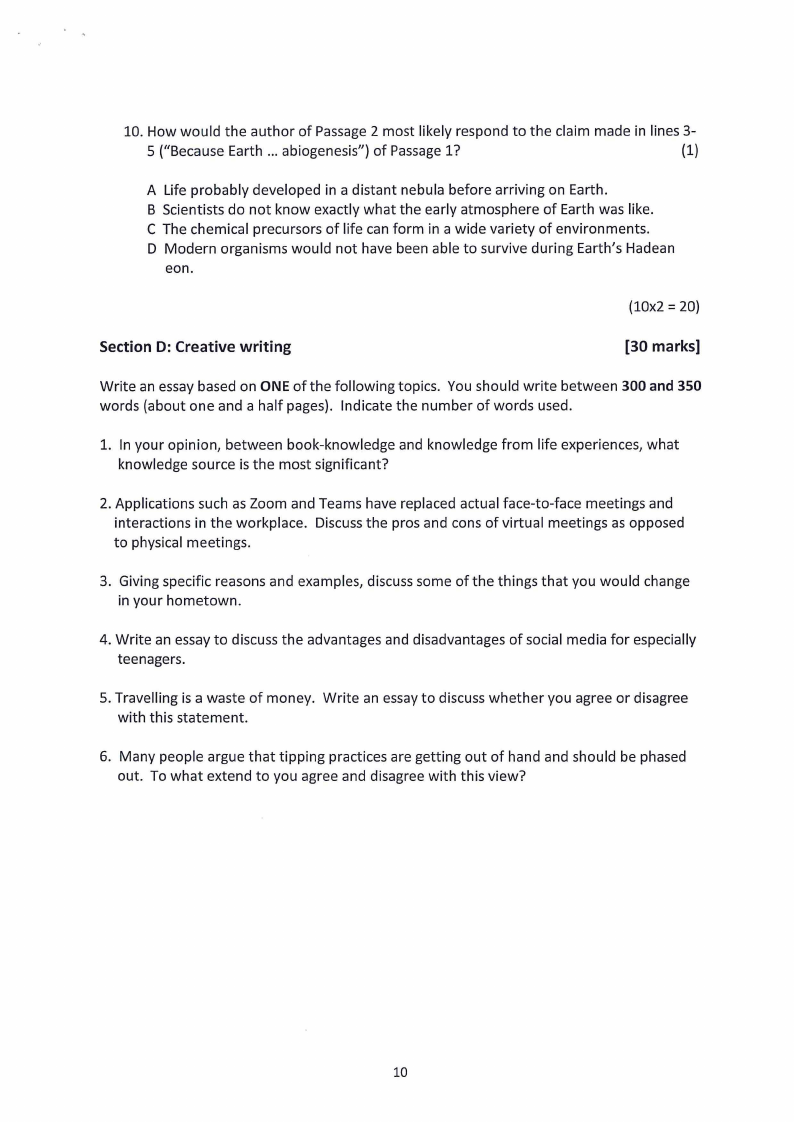
Section A: Reading Comprehension
[25 marks]
Read the passage below and then answer the questions that follow.
Body Language
"Let me have men about me that are fat," says Julius Caesar to Marcus Antonius in
Shakespeare's play Julius Caesar. In Julius Caesar's opinion, fat people were more trustworthy
than thin ones - that is, those with a "lean and hungry look," who "are dangerous."
Shakespeare was not the first person to categorise personality according to body type. If
you've ever jumped on the bandwagon and reacted to people based on the way they look
you know he wasn't the last. The relationship between physical characteristics and
personality has been explored for thousands of years and used to predict and explain the
actions of others. Although prehistoric man probably had his own ideas about the skinny guy
in the cave next door, the ancient Greeks historically have been responsible for Western
theories about body and character.
The Greeks believed the body was composed of four humours, or fluids: blood, black bile,
yellow bile and phlegm. The one someone had the most of determined his or her
temperament or personality type - sanguine (hopeful), melancholic (sad}, choleric (hot-
tempered}, or phlegmatic (lazy or slow).
Although this ancient theory eventually lost its popularity, it was replaced over the next few
thousand years by all kinds of other ways to identify and catalog people by type. One of the
most popular modern theories was proposed by William Sheldon in the late 1940s and early
1950s. He suggested a relationship between body shape and temperament. According to
Sheldon's system, the endomorph, with an oval shaped body and large, heavy stomach, is
slow, sociable, emotional, forgiving, and relaxed. The mesomorph, with a triangular shape
and a muscular, firm, upright body, is confident, energetic, dominant, enterprising, and at
times hot-tempered. The ectomorph, with a thin, fragile body, is tense, awkward, and
meticulous.
A number of researchers since Sheldon have contributed their own ideas to the basic theory
that body shape and personality are somehow connected. Going one step beyond basic
shape is the idea of "body splits." This theory looks at the body in sections - top to bottom,
front to back, torso and limbs - with the idea that each part of the body tells its own story.
For example, the upper half of the body, consisting of the chest, head, and arms, is expressive
and conveys our feelings to others through gestures and facial movements. The lower body,
on the other hand, is associated with more deeply felt emotions, particularly those about
family, children, and self-image.
According to this theory, someone with a well-developed upper body will be active and
outwardly confident. However, if this same person has noticeably thinner legs and narrow
hips, he or she might have trouble expressing himself or herself to others, lack self-
confidence, and find it difficult to think about deep emotions. A person with a small chest
but large hips will have opposite traits, such as being shy in public but emotional and loving
2


























